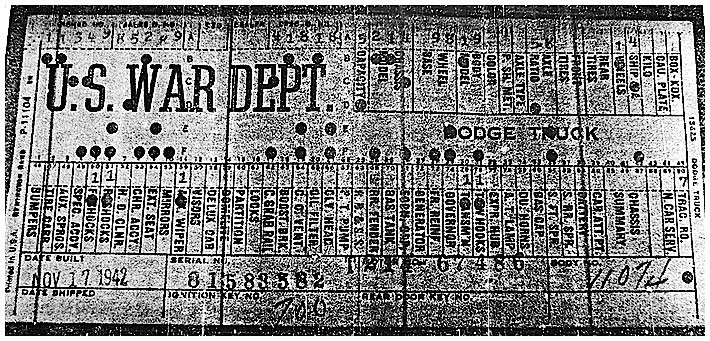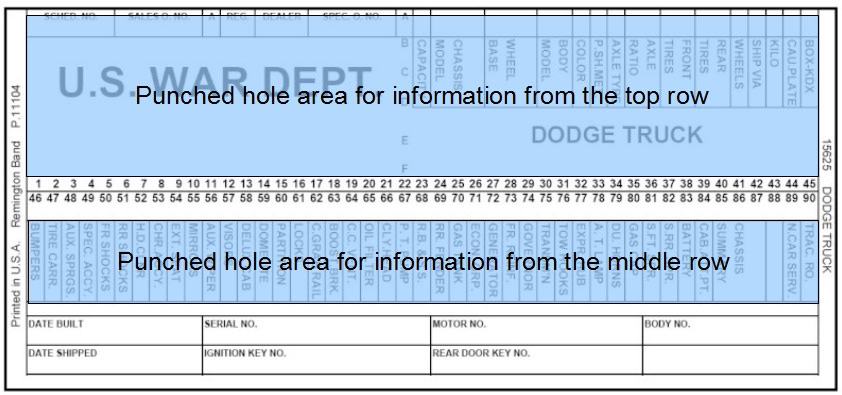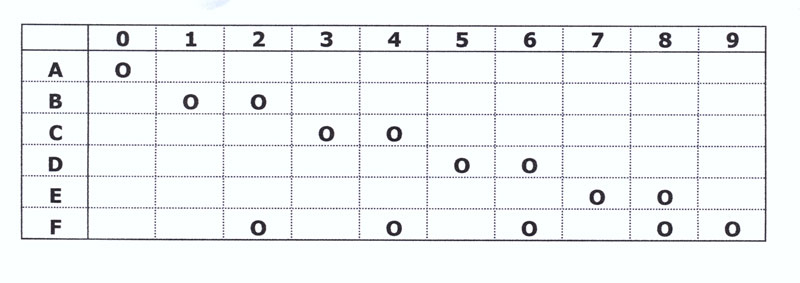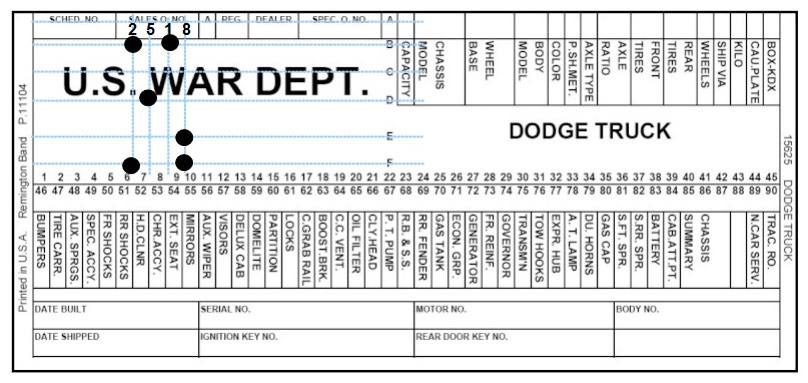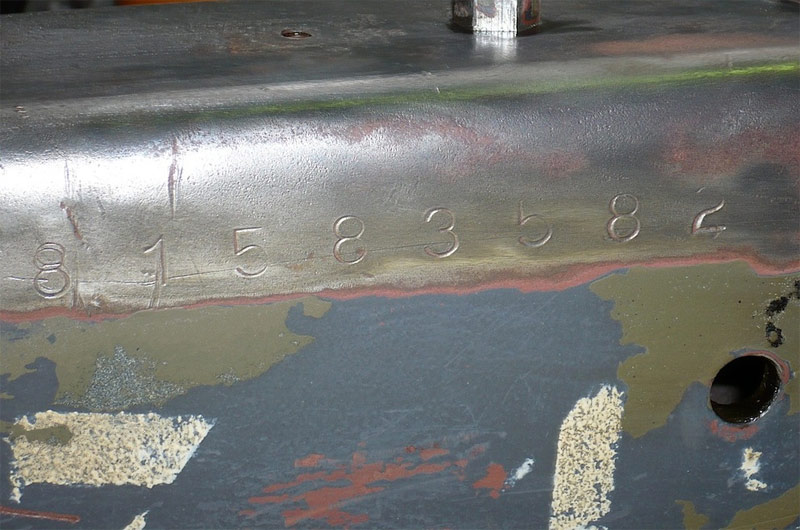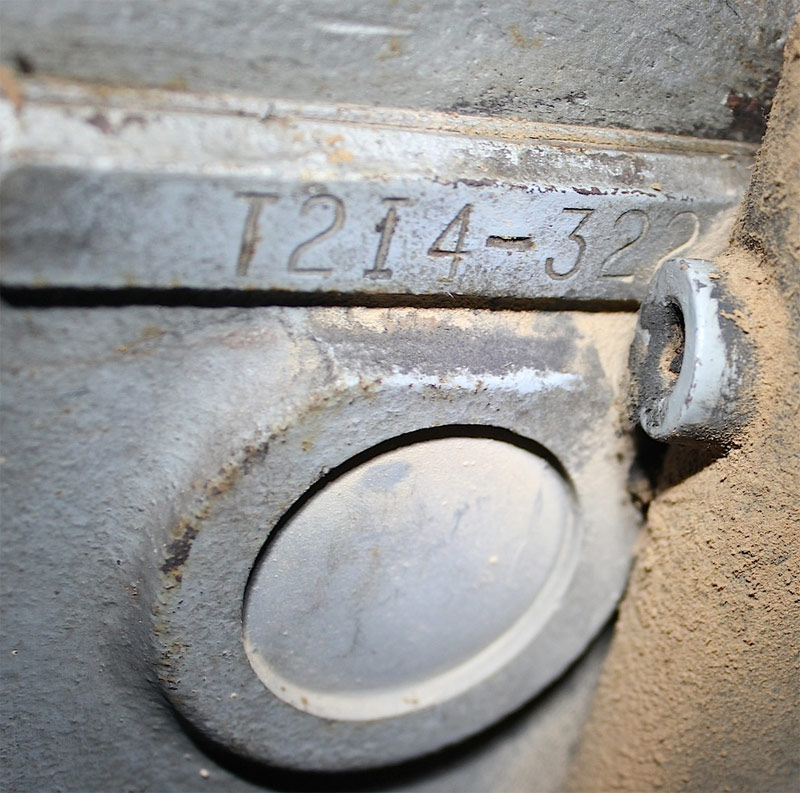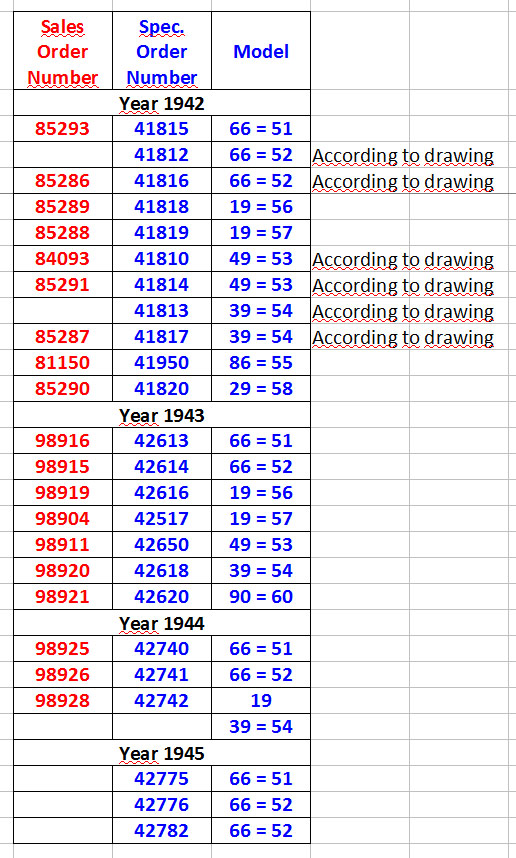|
NEW VERSION (FIRST SKETCH ONLY 13. May 2012) about VIN, Serial Numbers, Body Tags, 80+ Build Cards etc. |
| |
T'is true there's magic in the web of it: Dodge Series WC51 to WC61 Build Cards |
|
| This page is based on an analysis of Dodge Build Cards performed by Juan Pelaez and Richard Tercier. |
| A caveat from Juan in the beginning: This analysis is based on a limited number of cards available |
| at the moment of the analysis (the dataset used can be found at the bottom of this page |
| and the cards can be seen on the Build Card page), therefore all conclusions are preliminary. |
| |
| A lot more cards are needed to confirm the results. |
| Any comments that shine more light on the interpretation of the build cards are appreciated. |
| |
| In addition a build card template created by Richard Tercier is used in this page. |
|
| The build card contains a multitude of important information about the dodge as e.g. |
| schedule number, sales order number, spec. o. number, body model in the top row or |
| date built, shipped date, serial number, motor number, body number in the bottom row. |
|
| The information is printed or handwritten on the card in the top, middle and bottom row |
|
| The information from the bottom and middle row is also encoded as a form punch card |
| by holes punched into the card, presumably for automated sorting/processing. |
|
| Decoding the punched holes, which might be useful if the written information is |
| no longer cleary readable, can be done with the help of this table: |
|
| Each number from the top row is duplicated in the same column by the punched holes. |
| The example below illustrates this with a fictive dealer number. |
|
| |
| |
Let every eye negotiate for itself |
|
| Some entries on the build are also put on various parts of the vehicle. |
| The chassis (serial) number is put with marking stamps on the external left |
| front side of the chassis and the engine block is engraved with the motor |
| number on its front left side. |
|
| There is another marking on the exterior of the chassis, |
| located on the drivers side towards the back wheel. |
| This engraving identifies the chassis model. |
|
| This number consists of series number model number – body number. |
| The series number 42 is a number given by Dodge to the ¾ ton WC series |
| and is the same for all vehicles of all production years. |
| |
| The model number - the same as found on the upper right corner of the build card – describes the model. |
|
| The body number the same as found on the bottom right of the build card – describes |
| number in production, e.g. the 1650th vehicle of this type produced |
| |
| The serial number from the build card is also found on the plate on the dashboard |
|
| In addition to that command cars have also the cabin number engraved on the firewall |
| at the front of the cabin. This appears to be a Budd serial number; it does not match the |
| body number on the identification plate and does not seem to be correlated to any of the |
| dodge numbers on the build card or vehicle. |
|
| |
| |
To winch, or not to winch? |
| When you receive a build card from Chrysler, you will have a lot of information as built date, |
| the chassis number, motor number and much more, but the exact model, e.g. if it is a WC51 or WC52, |
| and if it was originally equipped with a winch or not is less obvious from the build card. |
| |
| To clarify that you need a more in-depth look at the build card. There are two entries on the build card |
| that allow us to figure out whether it was originally equipped with a winch or not: Sales order number |
| and spec order number. Please be aware, that the following conclusions are based on a limited number of |
| available datasets. |
|
| This conclusion is supported by technical drawings from Dodge. |
| Exemplarily plans of a WC52, 53, and 54 from 1942 are shown below with the S.E.O. Number |
| – whose first five digits are identical with the spec. order number – in the top right corner. |
| |
| PICTURES WILL FOLLOW |
|
| |
| |
What's in a date? |
| After production the vehicles were taken to an open-air storage areas and put in stock, |
| awaiting the finishing details as the US registration number on the hood and the final |
| acceptance inspection by a government inspector. |
| |
| It is not entirely clear what they used to give as the date of production, the day it left |
| the production line, the day it was fuly completed, or the day the US registration number |
| was painted on it. This seems not to have been clearly defined and for now the built date |
| is assumed to be the date when it was completely finished and ready to be packed for shipment. |
| |
| Below the date built there is a field for the date shipped, which you could assume contains |
| the shipping date, but in reality this does not seem to be the case. Comparing vehicles that |
| still have the original serial number on the hood with this entry on their build cards shows |
| that this field contains in handwriting the US registration number for all the examples |
| available for us. |
|
| If we look at the build card of this vehicle, series number 81540914 with the US registration W-81540914 on the hood, the following can be found: |
| Dodge received the order for this WC57 under the number W-398-QM-11422 as part of an order for a batch of 916 units. |
| Registration numbers assigned were W-20184953 to W-20185868 and this dodge was the second unit from this batch. |
| |
| As this is consistent for the few datasets available for this study the preliminary conclusion is: |
| If this field was used at all, it was routinely used to fill in by hand the US registration number already or soon to be placed on the hood. |
| |
| |
| |
| Below is a detailed list of the build cards included in this study sorted by chassis number and year. |
| Additional buld cards received will be added to this list and carefully checked whether the conclusions presented above can be confirmed or have to be revised. |


